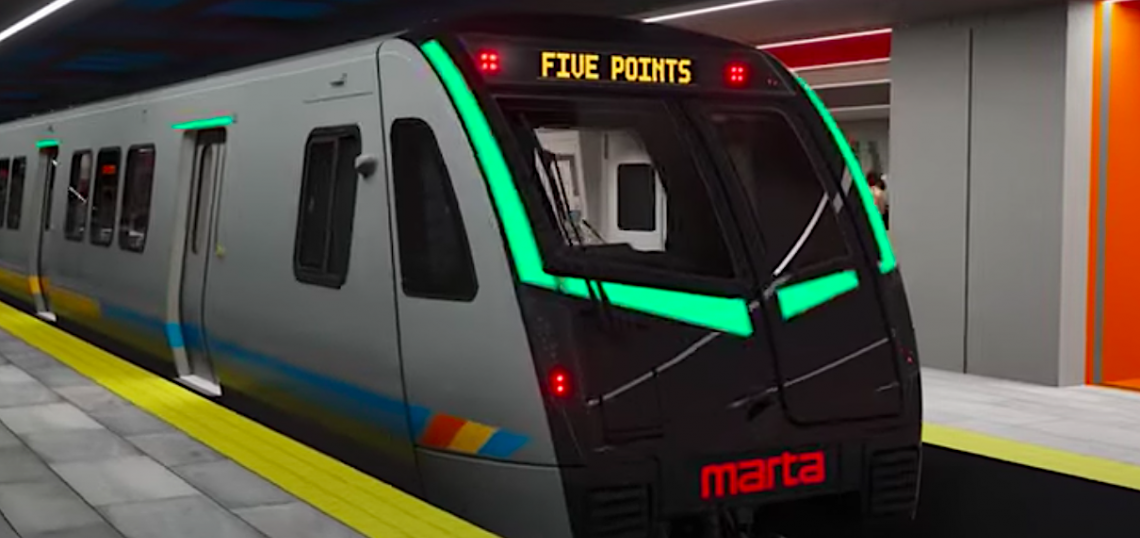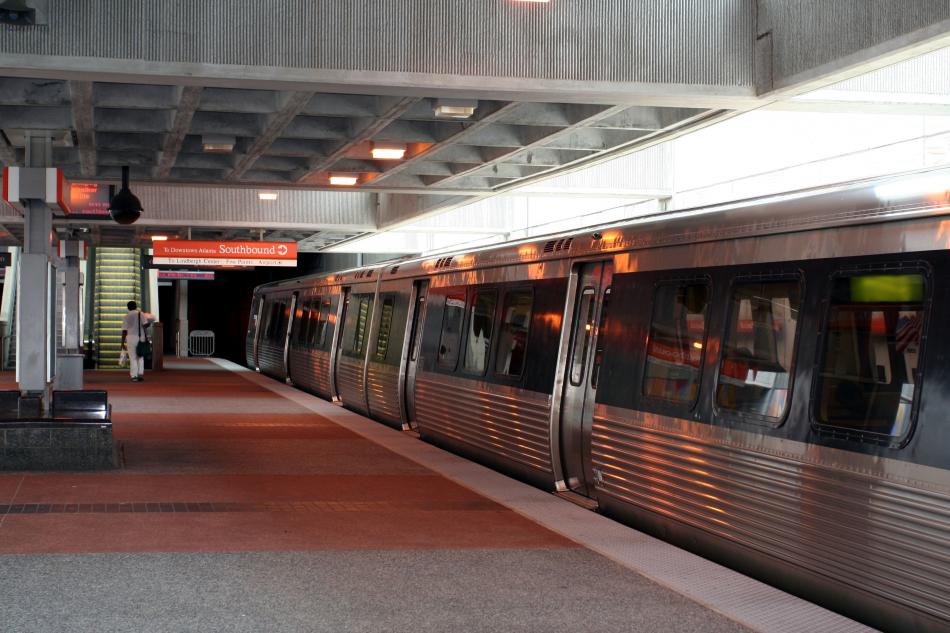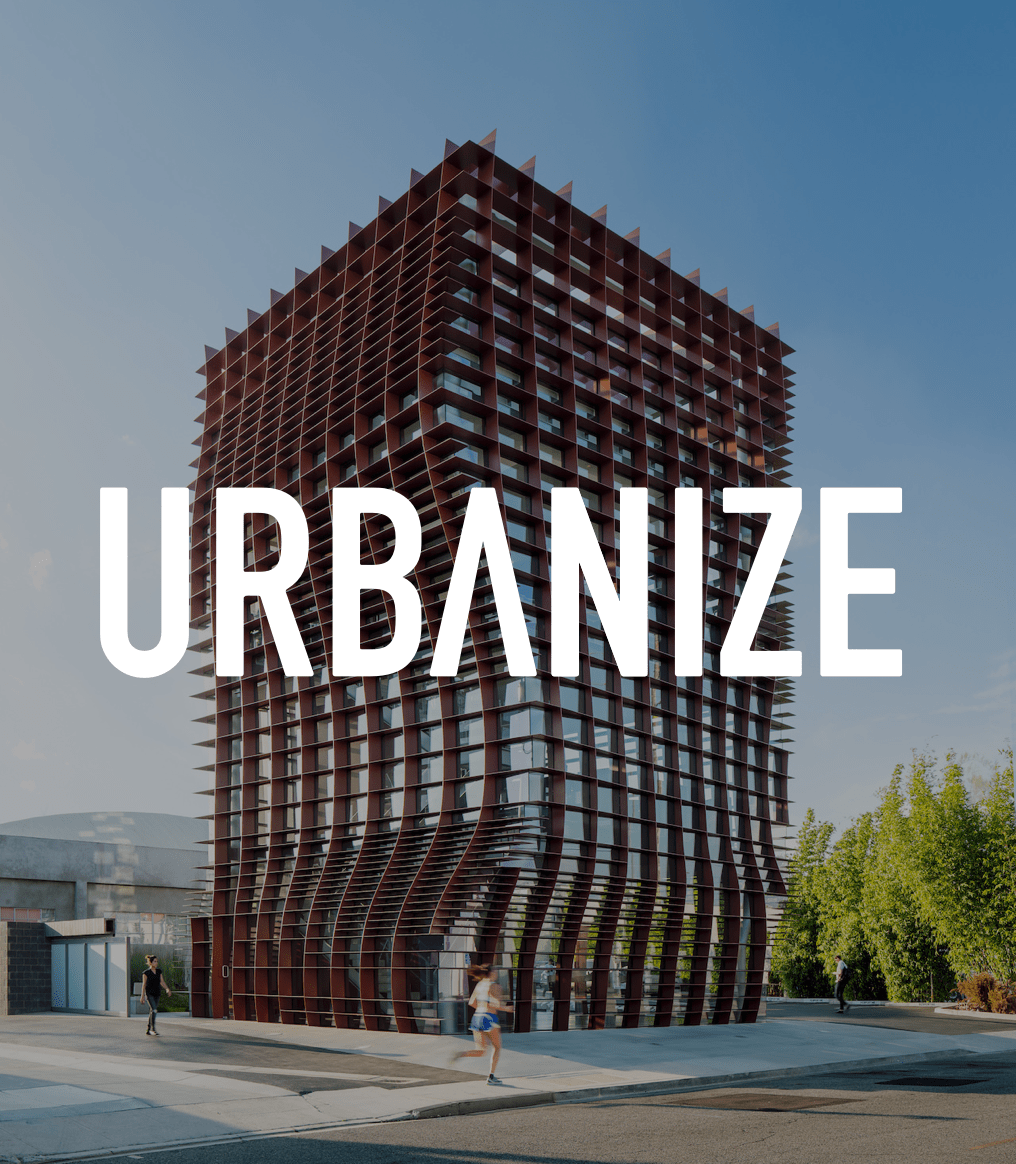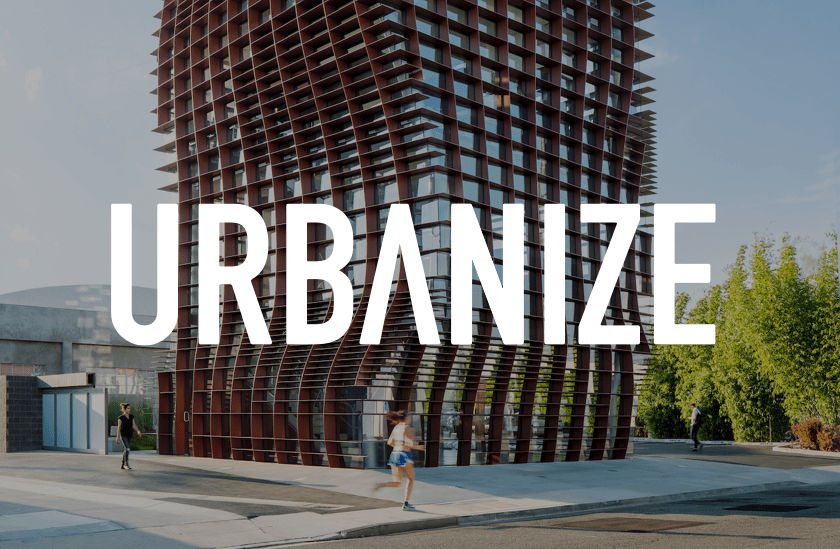Most people who follow Atlanta urban planning would associate Matthew Rao with his passion project—chairing the transit advocacy group Beltline Rail Now, which he’s done since 2021. But as an Atlantan of 50 years and Georgia Tech-educated industrial designer by day, Rao has followed MARTA literally since its beginnings. His father took him, as a kid, to watch the first test-runs for MARTA’s east-west trains in the late 1970s. A spectacle, indeed.
Inspired by a recent, witty reader comment on these pages—as spotlighted Saturday on our social media feeds—Rao got to thinking not about the long-term prospects of light-rail cars zipping along the Beltline, but about how MARTA could quickly take steps to improve public perception, in his estimation. The following Letter to the Editor is “written from my perspective as a citizen, resident, and business owner in Midtown,” he notes. It’s been lightly edited for clarity and length.
...
Dear Editor,
I live three blocks from the Midtown MARTA station and chose to live where I do, within walking distance to a station, as a requirement. I later moved my business to a storefront here to further reduce my carbon footprint, create access for all of my employees present and future, and to make riding MARTA as easy as possible.
I ride MARTA rail about once per week, on average. I nearly always take it to the airport, and I will take it to Buckhead, downtown, or various other points. I walk to work, so no transit is needed for a commute.
In other words: I’m the “transit-optional” rider MARTA needs to court.
Our MARTA rail system is one of only three like it, the others being Washington D.C.’s Metrorail and San Francisco’s BART. There are other fine American metro systems built since those three, but Atlanta, D.C., and the Bay Area are special in a variety of ways.
Having lived here since middle school, I was around for MARTA’s opening day. There was a giddiness in the air that I still remember. Atlanta, whose metro population was less than 1.5 million in the late 1970s—yes, that’s right—was joining the league of big cities. The tallest buildings in all of Midtown were the “towers” of Colony Square. City leaders knew then that building the subway with three stations, serving the then low-density Midtown, would create the conditions for its morphing from a residential neighborhood into a city. It has. And it’s getting denser all the time.
During the mid-1990s Olympics era, there was such pride in our system. The trains ran often and late into the night—and they were packed. The venues were clustered to take advantage of station locations. No one drove a car to attend the Games.
I felt that same sense of pride and excitement as MARTA recently unveiled its new railcars. The excitement, in fact, was palpable and intense for the new Swiss-made trainsets. They are beautiful, with interiors designed for today’s lifestyles, including spaces for bikes and wheelchairs and luggage. A four-car train holds more passengers than the current six-car model, and two of these can be coupled together.
We’ll soon have the best metro railcars in America. That’s something to celebrate!
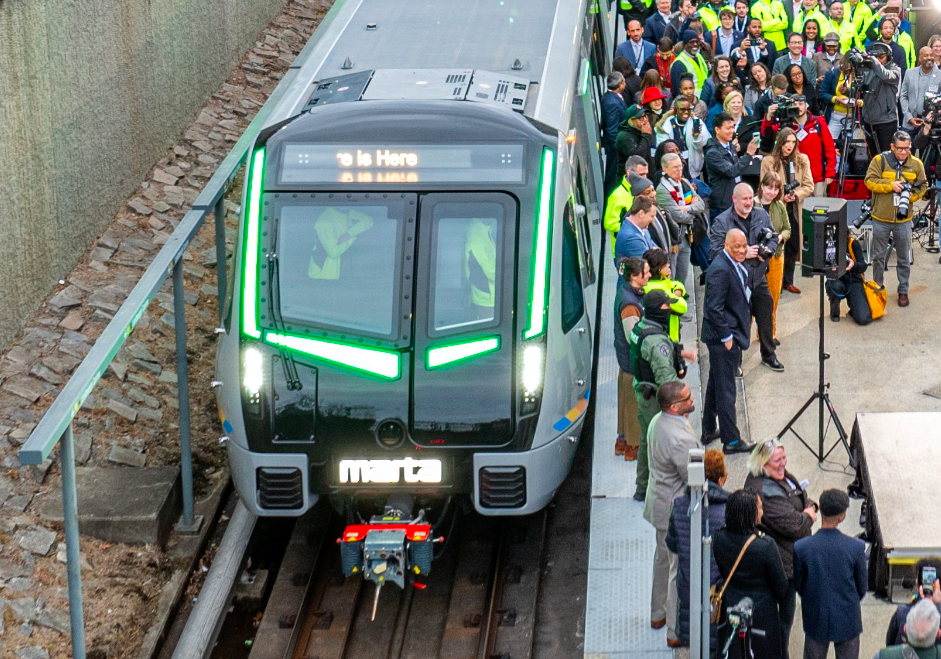 The front exteriors of railcars will have a lighted “smile” in either red, gold, blue, or green that denotes the color of each approaching rail line, per MARTA. Courtesy of MARTA
The front exteriors of railcars will have a lighted “smile” in either red, gold, blue, or green that denotes the color of each approaching rail line, per MARTA. Courtesy of MARTA
But a new fleet alone won’t make MARTA the agency it needs to be, nor will it necessarily make ridership recover and grow. For generations to come, MARTA will be the only transit agency we have. Let’s support change and make it happen. There’s a desire on the inside at MARTA—as I’ve personally seen—to become one of the nation’s leading transit agencies, as measured by ridership and rider satisfaction. But they haven’t gotten there yet.
Other cities are recovering and exceeding their pre-pandemic levels of ridership. So what’ll bring transit-optional riders like me back onboard with MARTA, riding more often?
It’s a long list. But MARTA can do some things this year, right now:
1. Clean it up.
It saddens me to imagine the incredible new Swiss-made railcars maintained like the ones we have now. I ride transit all over the world, and there are cities that do and cities that don’t when it comes to cleanliness and states of good repair. That goes for the trains and the stations. Have the beautiful stainless steel HVAC ducts at Peachtree Center station been cleaned since the Olympics?
2. Increase frequency, especially at night and on weekends.
We shouldn’t ever wait more than 10 minutes for a train. Often on the Red and Gold lines during weekdays, I don’t. But when you wait too long, the transit-optional rider considers ride-share. We aren’t just commuters anymore, and we need an urban rail system to work for our lives. That’s a 24-7 life—not a 9-to-6 life.
3. Make MARTA feel safer.
I don’t know what the stats are, but we have to accept the reality that many Atlantans won’t ride MARTA because they don’t feel safe, especially at night. Make sure everyone riding has a valid ticket and that MARTA police patrol trains and stations. Don’t allow bad behavior and enforce the rules we already have. That makes us all feel better about being encapsulated in a train for 15, 20, or 40 minutes.
4. Move forward as fast as possible with the $12-billion More MARTA expansion.
Show progress. Stop the endless study and reevaluation of the projects defined in 2019 and get on with it. These bus-rapid transit and light-rail projects coupled with station improvements do another thing that we need: connect the many nodes of density to each other and to the rest of the city. That means a one-connection ride from whenever you are to more places that we all want to reach.
It’s clear the suburban counties are not ready to join MARTA, and when given the opportunity to expand their own systems this past November, they rejected that soundly. They don’t want transit. Not yet. More MARTA is for the City of Atlanta. Only. Let’s worry about that as far as expansion goes.
5. Stop the truncation of the Red and Green lines after 9 p.m. and run them all the way, end to end, at all times.
The forced transfer to the Gold and Blue lines means more hassle, more time spent waiting for a train, and a loss of riders. And for those on the Gold line between the Airport and Lindbergh, a longer wait for a more crowded train. Cities don’t do this when they want to attract more riders and keep cars off the road. Extend the Green line to Avondale and use the third platform there for riders to transfer from a Blue train to a Green train.
6. Use the Breeze system we already have to change the fare system and graduate the fare.
I often don’t take MARTA one or two stops because the fare is high for that. And visitors to the city going from Airport to North Springs stations pay the same as I do to go one stop. Decreasing the fare for short trips and increasing it for longer ones is what those systems like BART and Metrorail did from day one. This stimulates rides for short trips and increases revenue from longer ones. Those with monthly passes and students would not experience a fee hike. Only the single-use, transit-optional rider like me. It costs $30 to $35 for a one-way ride to the airport (without surge pricing). Would I pay $5 or even $7 for that on the train? Absolutely.
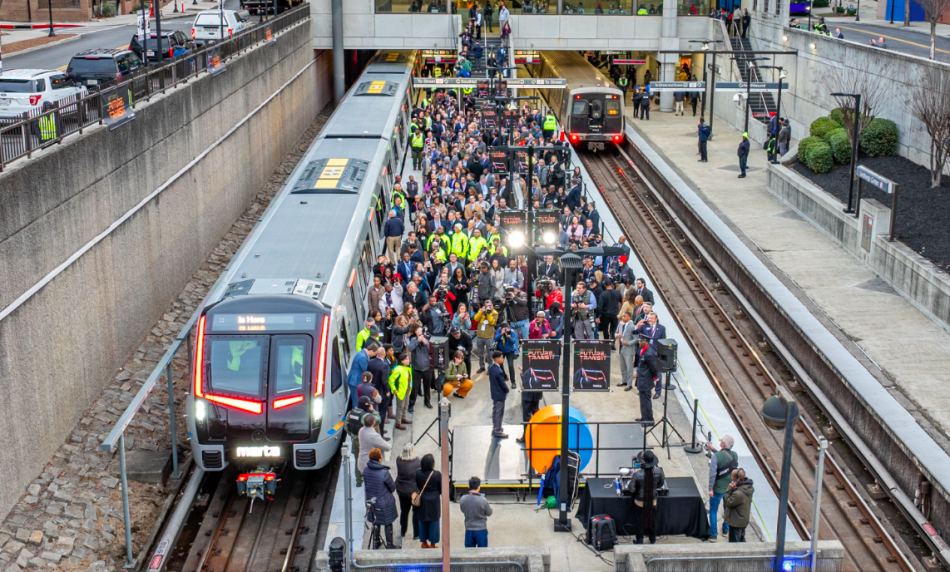 A juxtaposition of MARTA's first CQ400 train to be operational on tracks (left) and a current railcar. Courtesy of MARTA
A juxtaposition of MARTA's first CQ400 train to be operational on tracks (left) and a current railcar. Courtesy of MARTA
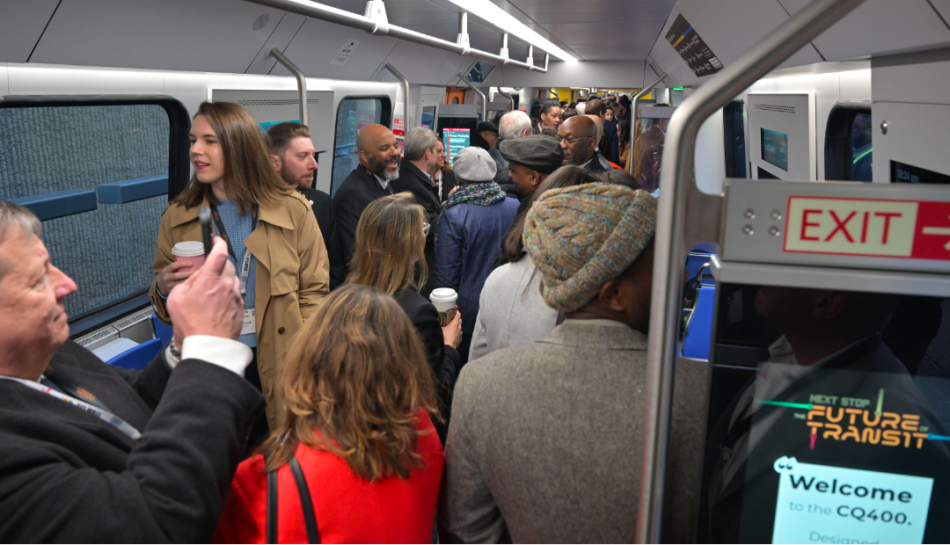 How the new MARTA railcars' open gangway designs allow for passenger travel throughout the train. Courtesy of MARTA
How the new MARTA railcars' open gangway designs allow for passenger travel throughout the train. Courtesy of MARTA
Big picture, creating more density near and at the MARTA stations we have and modifying land use policies is another realm of possibility for growing ridership.
The lesson of the early 21st century is that unless we expand the American Dream in a way that makes a family consider other options than a single-family house with a yard in a far-flung suburb that was once a forest or farm, we won’t ever be able to build enough MARTA.
Chasing the suburbs with MARTA rail is exactly what we don’t need to do.
— Matthew Rao
...
Follow us on social media:
Twitter / Facebook/and now: Instagram
• Recent MARTA news, discussion (Urbanize Atlanta)




